
U.S. Olympic Sweep Aided By Shooters
By Franklin L. Orth, NRA Executive Vice President
and First Vice President, U.S. Olympic Committee
Perhaps there is symbolic significance in the fact that U.S. marksmanship superiority in the 1968 Olympics was best demonstrated by an American clergyman shooting from the kneeling position.
When Gary Anderson went down on his knees for the second phase of the Free-Rifle Match, he was tied for fourth place behind a Russian and 2 Swiss. He had everything psychologically against him. In another event, the 50-meter small bore prone or English Match, he had finished 8th behind Czechoslovakia's Gold Medal Winner Jan Kurka. A large gallery of spectators crowded behind him to watch his every move, adding to the tension.
Gary coolly fired a 389 kneeling. It took first place in that phase, 3 points ahead of his closest competitor. Then he shot 374 standing and tied for first in that phase.
Gary's total of 394 prone, 389 kneeling and 374 standing gave him a glorious 1157 points out of a possible 1200 for a new world's record. It broke his own previous world's record, set in the 1964 Olympics in Tokyo, by 4 points.
The Gold Medal won by Gary Anderson in this event, plus 2 silver Medals taken by other U.S. shooters, helped our country to win one of the most impressive overall Olympic victories in the history of the international games.
When Gary's feat was announced, there was great cheering from practically all the countries, not just from the U.S. and our polite Mexican hosts. The crowd all but mobbed him in a true tribute to a great and superb competitor.
In other events, Tom Garrigus, a 21-year-old Air Force sergeant, sprang a welcome surprise in the Olympic Clay Pigeon event by breaking 196 out of a possible 200 and winning a Silver Medal for second place. It took remarkably fine shooting by another surprise winner, John Braithwaite of Great Britain, to outdo Garrigus. Braithwaite tied the Olympic record with a 198.
Lt. John Writer, U.S. Army, earned the U.S. its second marksmanship Silver Medal with an 1156 in the 50-meter 3-position Small Bore Rifle Match, finishing just one point behind West Germany's Bernard Klinger.
Although its success was not outstanding, our American shooting team was the finest, I believe, that we have ever assembled. Unfortunately for our hopes and expectations, most of our shooters reached peak from about a week early and shot better scores in classification than in the actual events.
Competition was of the stiffest. Shooters of many other nations, benefitting from increased experience in first-class International shooting competition, excelled themselves. Despite careful pre-Olympic conditioning at Santa Fe, N. Mex., several of our shooters found themselves unwell because of high altitudes and other factors when called upon to shoot.
To me as First Vice President of the U.S. Olympic Committee, the impressive and indisputable overall sweep made by our athletes was, all in all, a very sweet victory. American athletes captured 107 Medals, including 45 Gold Medals - the highest total for any one nation in any Olympiad. The Soviet Union was second with 91 Medals, 5 of them in shooting.
"Blueprint for Victory"
The great overall triumph for our teams sprang, I am sure, for what I call our "Blueprint for Victory." This was a study of Olympic training and performance in all sports made after the 1960 Olympics by the Arthur D. Little Company at a cost of some $150,000. I was instrumental in pressing for this study, despite its seemingly considerable cost, and am now proud to be able to say that it paid off. The study outlined the procedure for obtaining and organizing proper coaching and facilities to develop teams in each sport. It helped us to reverse the situation in earlier Olympics.
Some such step as the "Blueprint for Victory" certainly was necessary to counter the buildup that the Soviet gave to athletics beginning right after World War II. It has been said that they enrolled 60 million athletes of all sorts and spent an estimated billion dollars to build up to their 1964 peak. Right now, after the outcome in Mexico City, they are reorganizing to try to beat the U.S. in 1972. If we are to stay ahead, a matter of world prestige far beyond the realm of sports, we must make progress of our own in all Olympic sports including competitive shooting. There can be no letdown anywhere.
As for the XIX Olympics, our hosts, the Government and people of Mexico and its capital city, exceeded themselves in hospitality of the finest quality and most genuine warmth. They went to great lengths to build the fabulous Poligono Olimpico to accommodate the shooting events. These drew nearly 200 more participants and 14 more teams than the 1964 Olympics.
At the impressive opening ceremonies in Mexico City's Estadio Olimpico, I was privileged to be one of the 5 U.S. Olympic officials who led our American teams in the traditional parade of competitors around the stadium. At the head of our column wee USOC President Douglas F. Roby; USOC Second Vice President Merritt H. Stiles; USOC Secretary Robert J. Kane; USOC Treasurer Julian K. Roosevelt, and 'myself' as First Vice President.
While in Mexico City, both NRA President Harold W. Glassen and I participated in sessions of the Executive Committee or law-making body of the International Shooting Union (ISU).
Team adjutant Edward B. (Jim) Crossman, an NRA Director who has been a standout leader in International shooting activities; and team captain Harry Reeves, himself a 6-time National Pistol Champion, headed the U.S. Olympic squad composted of 4 pistol shooters, 4 rifleman, and 4 shotgun competitors.
The pistol team included ADR1 Donald Hamilton, USN; S/Sgt. Arnold Vitarbo, USAF; Lt. Col. William McMillan, USMC; and S/Sgt. James McNally, USA. World Champion Anderson led the rifle team which included Maj. John Foster, USA; Maj. Lones Wigger, Jr., USA; and Lt. John Writer, USA. The only civilian on the squad was Robert Rodale, an experienced International Skeet shooter. His teammates were Sgt. Garrigus; Sp4 Larry Stafford, USA; and SM/Sgt. Earl Herring, USAF.
Shooting Events
the 1968 Olympics featured 7 shooting events - Free-Rifle, Free-Pistol, Small Bore Rifle Prone, Small Bore Rifle 3-Position (prone, kneeling, standing), Rapid-Fire Pistol, International Skeet, and Clay Pigeon. Thus, a total of 21 medals - 7 each of Gold, Silver and Bronze were on the line for the straightest-shooting contestants.
The first event on the Olympic shooting program, Free-Pistol, included 2 of the Nation's finest handgunners, Air Force S/Sgt. Arnold Vitarbo and 2-time National Pistol Champion Donald Hamilton of the Navy. Vitarbo from Lackland AFB, Tex., armed with the famous free-pistol designed and built by Olympic team armorer Maj. Franklin Green, USAF, fired a very high 559 but came 3 points behind the winning score fired by Gold Medalist Grigory Kosykh of the Soviet Union. Vitarbo missed getting the Bronze Medal by a point. Hamilton, weakened by a lingering illness from the high altitude, was not up to his best in Mexico City and fired 548 to finish 17th in the field of 69 competitors.
Garrigus came by his Silver Medal the hard way because he was tied at 196 with Kurt Czekalla of East Germany and Pavel Senichev of the Soviet Union. A huge crowd packed the Poligono Olimpico's shotgun field at the 3 deadlocked shooters hooked up in a 25-target shoot-off. Garriugus and Czekalla "went clean," breaking 25 of 25 clay birds. Senichev was eliminated when he missed 3 targets. Garrigus shot another flawless 25 in the second shoot-off while Czekalla missed his 1st and 12th targets to earn the third-place Bronze Medal.
Strangely, Garrigus; performance was the highest finish for an American clay target shooter in the Olympics since 1920. World Championship competition, on the other hand, has seen several American victories, as a U.S. shotgunner won the Gold Medal in Int'l Skeet at Wiesbaden, West Germany, in 1966. Army Sp4 Larry Stafford, a year older than Garrigus at 22, broke 189x200 for 26th place in the Clay Pigeon event, a challenging, fast-moving version of clay target shooting.
Gold Medal winner
In the Small Bore Rifle 50-meter Prone or English Match, American hopes rested with 2 former Olympic Champions, Anderson and Maj. Wigger of the Army Marksmanship Training Unit at Ft. Benning, Ga. Anderson, who recently completed his studies for the ministry, contemplated his outlook for future Olympic competition, saying "I got into shooting first and the ministry second. I intend to keep up my interest in shooting because I think it's important for a minister to be actively involved in what people are doing." The owner of 20 individual and team Gold Medals in Olympic, World and Pan American Games competition then fires a 595 to come in 8th in the English Match. Wigger, who won a Gold and a Silver Medal in Tokyou, was 25th with a score of 592. Anderson then proceeded to win the Free-Rifle Gold Medal, finishing 6 points ahead of Russia's Valentin Kornev.
Lt. Writer in finishing second in the 50-meter 3-position Small Bore event, admitted he had fired a bad series of shots in the standing position. "I just lost my timing for those 15 shots or so," he said. "In practice I'd been scoring 7 or 8 points higher." Writer's teammate, Maj. John Foster, scored a 4th-place 1153. The 3-position event had been rated a toss-up in pre-Olympic forecasts because at least 10 of the shooters had fired 1156 or higher - enough to win most 3-position tournaments.
The U.S. Rapid-Fire Pistol hopefuls, Lt. Col. William McMillan, who won the Rapid-Fire Gold Medal 9 years ago in Rome, and S/Sgt. James McNally, finished well back in the field as Josef Zapedski of Poland, runner-up in the 1966 World Championships, took the Gold Medal with a new Olympic record score - 593x600.
Inserted into the roster of Olympic events for the first time, the International Skeet contest was dominated by European shooters. The U.S. skeet shooters suffered through 2 days of competition as Herring with 190 and Rodale, not feeling up to par, with 189, trailed Soviet shotgunner Evgeny Petrov, who broke 198 of a possible 200 clay targets. Nuria Ortiz of Mexico, one of 3 women in the Olympic competition, was 13th with 191.
As a tribute his skill as a World Champion, Gary Anderson was appointed to the 6-member delegation that represented the United States at the official closing of the Games. While the orchestra played the traditional Mexican son of farewell, and the flame atop the stadium was extinguished, plans were already being drawn up for a fine U.S. showing in the 1972 Olympic shooting events to be held in Munich, Germany.
American Rifleman, Vol. 116, No. 12, December 1968
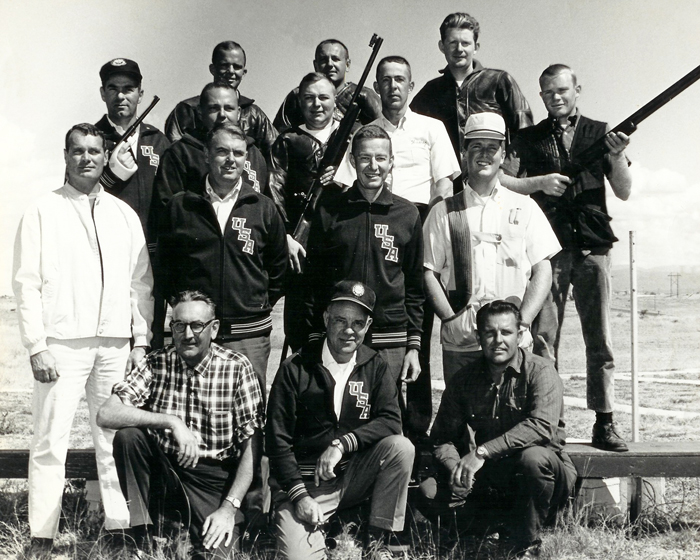
U.S. Shooting Team
Rifle Members
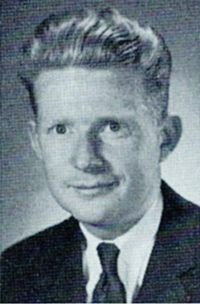
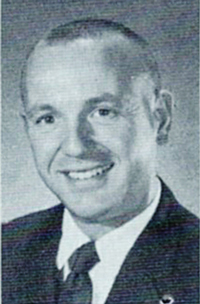
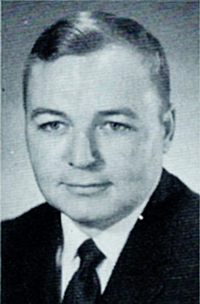
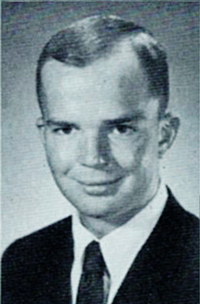
Gary L. Anderson, John R. Foster, Lones W. Wigger, Jr. and John H. Writer
Pistol Members
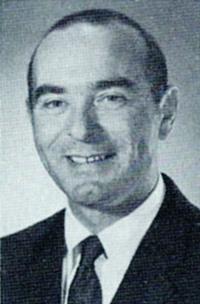
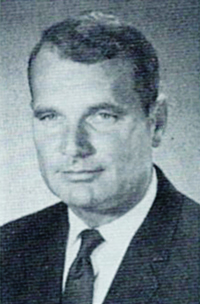
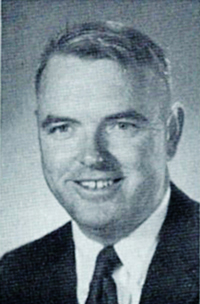
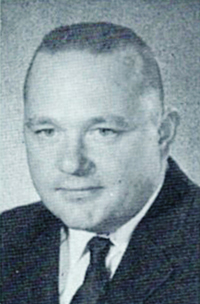
Donald L. Hamilton, William W. McMillan, James H. McNally and Arnold Vitarbo
Trap Members
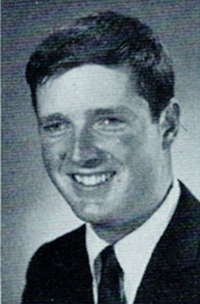
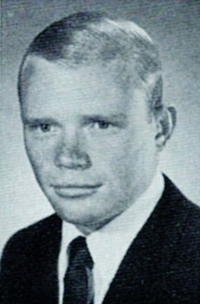
Thomas I. Garrigus and Larry R. Stafford
Skeet Members
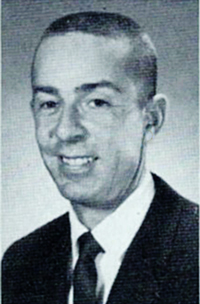
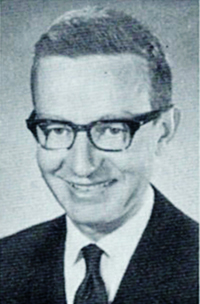
Earl F. Herring and Albert D. Rodale
Team Management & Support
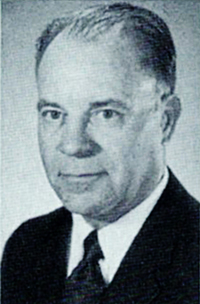
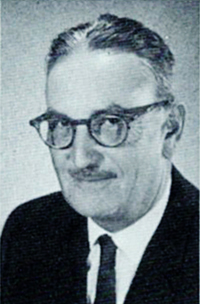
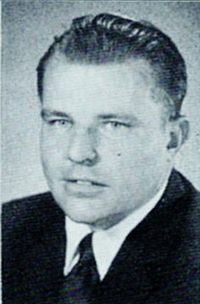
Harry Reeves (Team Captain) Edward B. Crossman (Team Adjutant)
and Franklin C. Green (Armorer)
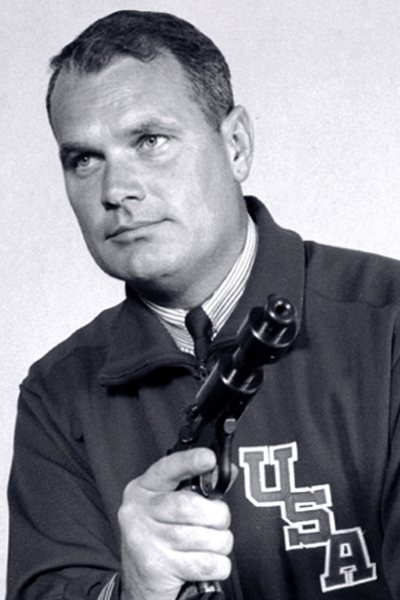
Olympic Ace Facing First Pistol Test
Marine Shooter Fires For Trip To Mexico City
The fierce pressure of Olympic competition settles on the flint-hard shoulders of Maj. William W. McMillan, an MCRD officer attached to the Weapons Training Battalion at Camp Pendleton, this weekend.
The major, a 6-footer weighing 200 pounds, will be firing his specialty, rapid fire pistol, in the Olympic Tryouts at Lackland AFB in San Antonio, Texas.
He won a Gold Medal for the United States in the 1960 Games at Rome with 587 points out of a possible 600, which mark tied the world record at that time. This mark since has fallen, and McMillan once shot 599 in a match at Quantico which, because of the shooting rules, could not be validated in national competition.
The 39-year-old officer, whose eyes are so sharp that both right and left can read the bottom of the eye chart, carries a fearsome burden in his lack of recent competition. He last shot at the July Pan-American Games in Winnipeg in 1967. In addition, he'll be using an experimental .22-cal. pistol which he has been firing only a month-and-a-half.
The pistol, basically High Standard in design, has weight forward on the barrel to reduce recoil. This is done through a series of gas-escape baffles. In addition there's a rubber buffer in the receiver to assist the slide in returning quickly to the closed position. The pistol cost $3,000 to make.
It is essential that the pistol not recoil outside the inner bulls eye ring, since McMillan must fire a string of five shots at five different targets in four, six and eight second intervals. The range is 25 meters, roughly 27 yards. The 10-ring bull's eye is oblong in shape and measures 3 inches by 4 inches.
McMillan won his last competition at Winnipeg with 581 x 600, but, though he was the highest American, he placed 12th at the Tokyo Olympics in 1964. There he shot 587, close, but not close enough, to the winning 592 fired by a Finn, Pentti Linnosvuo, a personal friend.
"I've been to his home," McMillan says. "We're good friends. He's a great shot. He owns a sporting goods store in Helsinki."
McMillan and his family of a wife and three children live at 1440 Buena Vista Way in Carlsbad. He has been in the Marine since he was 17 and has served in Korea and Vietnam. He rose through the ranks from private, getting his commission after Korean service. He is a native of Turtle Creek, Pa., just southeast of Pittsburg, but has never hunted deer in that buck-rich state - or anywhere else - only rabbits, grouse and pheasants. He used to raise beagle hounds.
The major never fired the pistol till 1949 when he took up the sport to dodge the job of "policing" brass on the range.
McMillan has been running three miles a day, doing 20 to 30 pushups at a time and squeezing a rubber ball. He has been watching his eating habits.
"You've got to be in complete focus when you're shooting," he says. "That means coordination, timing, and reflexes. You hold your arm at 45 degrees, call 'Pull', and there go the targets. You can't call anything back.
In Texas he'll stay away from fried foods, probably eat soft-boiled eggs and stay away from bacon and port. He'll center on bland foods.
"Diet's the most important thing when you get this far," he says.
He has been firing the championship course three or four times a week at Camp Pendleton since his last competition. But it's not the same as standing up there in the shooting tunnel and firing against another good shot - like Staff Sgt. Ed Teague of the Air Force.
"Watching him makes me nervous," McMillan says, "he's so fast."
Teague, who once shot a 590, will be in the field at AFB Lackland - his home base for tryouts. The qualified team will consist of four pistol shots, which helps some.
San Diego Union, July 7, 1968
Olympic Shooters Named
SAN ANTONIO, Tex. (UPI) - Four U.S. servicemen, including one former Olympic Gold Medal winner, won places on the U.S. Olympic shooting team Monday following the national rapid fire pistol and three position small bore rifle championship.
Marine Maj. William McMillan of San Diego, Calif., the 1960 Olympic champion at Rome, and Army S.Sgt. James McNally of Seattle, Wash., will represent the United States in the free pistol. McMillan won the pistol championship with a three-day score of 1,772 out of a possible 1,800.
Lt. John Writer of La Grange, Ill., and Maj. John Foster of Springfield, Ohio, tied for first place in the small bore with 3,438 out of 3,600 and both earned positions on the team. Writer won the national championship in shoot off.
Army Capt. Margaret Thompson of Topeka, Kan., trying to become the first woman to ever represent the U.S. on its Olympic shooting team, took a temporary lead in the small bore competition.
She shot 397 out of 400 in both the prone and kneeling positions - her kneeling score tying a record - but could not keep up the pace and finished third.
Olivario Vaques, a member of the Mexican Olympic team, shot a perfect 400 in the prone position of the small bore rifle competiton.
Names as alternates on the team were Air Force T. Sgt. Leslie Foster of San Antonio and S. Sgt. Alfred Richards of North Manchester, Ind. in the free pistol and Thompson and Marine W.O. David Boyd of Quantico, Va. in the three position small bore rifle.
Unknown newspaper, July 18, 1968
Major W. W. McMillan Will Compete In 1968 Olympics
Maj. William W. McMillan, WTBn. XO, earned a berth on the U.S. Olympic pistol team Monday by out shooting the entire field of competitors during three days of Armed Forces Competition at Lackland Air Force Base, Texas.
Major McMillan fired 1,772 out of a possible 1,800 points to break his own personal record of 1,768 which he fired in tryouts for the 1964 Olympics in Tokyo.
During the three days at Lackland, the Major also earned 1st place in the U.S. Amateur Championship.
A gold medal winner in the 1960 Olympics in Rome, he will again represent the United States this summer in Mexico City.
He begins final training for the Olympics September 15, when he will begin high altitude firing in Santa Fe, N. M. After some preliminary practice there, he will fly to Denver, Colo., where the U.S. Olympic pistol team is to be formed. After two weeks practice with the Olympians in Denver, he will fly to Mexico City for the 1968 Olympic Games.
The Major's .22 caliber pistol, designed specifically for competition shooting, malfunctioned during one of his rapid fire relays, causing the weapon to commence automatic fire with three rounds left in the pistol. The malfunction caused one of the rounds to miss the target completely, and threw another round out of the desired impact area. Even with this malfunction, the Major still only dropped 28 out of the possible 1,800 points.
Maj. McMillan will compete on the Olympic pistol team with one other member of the Armed Forces, Army SSgt. James McNelly, who fired a 1,760.
MCRD Chevron, Friday, July 19, 1968
County Native To Compete In Olympics
Marine Corps Major William W. McMillan, a native of Allegany County and the only American to have won a gold medal in Olympic pistol competition, has gained a berth on the U.S. Olympic rifle and pistol team.
McMillan, who was born at Borden Shaft [Correction: Frostburg], will be making his fourth Olympic appearance at Mexico City this fall. In 1952, he competed in the Olympic Games at Helsinki, Finland, and in 1960 he took the rapid-fire pistol event at the Olympics in Rome with a score 147 x 150 in a special shoot off against the Russian and Finnish comtenders. He also competed in teh 1964 Olympics in Tokyo.
McMillan's family moved to Turtle Creek, Pa., near Pittsburgh, and he graduated from Turtle Creek High School in 1946. He enlisted in the Marines upon graduation and was commissioned a second lieutenant in 1953 after a tour of duty in Korea. He now resides in San Diego, Calif.
Maj. McMillan's other shooting accomplishments are:
1957, National Pistol Champion; 1958, World Pistol champion in competition at Moscow; 1959, 1961 and 1962, first pistol shooter to win the Lauchheimer Trophy three times [Correction: five times, including 1954, 2d Place and 1955, 1st Place]; 1962 Distinguished International Shooter Badge as member of U.S. team which placed second in International Shooting Union Competitions at Cairo, Egypt; 1964, United States Rapid Fire Pistol Champion, qualifying for Olympic in Japan.
Cumberland Evening Times, September 6, 1968
Gold Medalist's Pistol Is Warm
SANTA FE — Gold Medalist Marine Maj. William McMillan of San Diego, Calif., said Wednesday he's getting his pistol warmed up for the Mexico City Olympics.
McMillan, who won his Gold Medal at Rome in the 1960 Olympics, had reported trouble in getting his pistol ready this week while training in Santa Fe with the current U.S. Olympic pistol team.
But he scored a 297 of a maximum 300 on a rapid fire pistol range Wednesday and reported, "I think it's okay now."
Another pistol marksman on the team, Navy PO 1.C. Don Hamilton of Brookline, Mass., said he's had trouble getting up to par but attributes it to difficulty in getting mentally keyed rather than the high altitude.
"I worried about this before comming here," Hamilton said about the high altitude training, but I haven't found it made much difference after the first couple of days."
Albuquerque Journal, September 19, 1968
8 Navy, 3 Marines On U.S. Olympic Squads
By MEL JONES
WASHINGTON — Eight Navy and three Marine Corps athletes will be competing in the Olympics at Mexico City October 12-27.
Two other Marines and a Navy officer will also be in the U.S. contingent, as coaches or managers.
When American shooters step up to firing lines, they'll include a couple of internationally renowned pistol champs. Marine Maj. William McMillan, gold medal shooter in the 1960 Olympics, and Aviation Machinist's Mate First Donald Hamilton, this year's U.S. International Free Pistol champion, are on the team. McMillan is stationed at MCRD San Diego; Hamilton at the Naval Air Facility, Andrews AFB, Md.
The boxing contingent will also muster a Navy man and a Marine. Airman Albert Robinson, All-Navy featherweight champ, normally stationed at NAS Alameda, Calif., will be tying on gloves. So will Sgt. Arthur Redden, light-heavy All-Marine and Interservice champion for the past four years. His home base is MCB Camp Lejeune, N.C.
THE ONLY Sea Service representative on the U.S. track team will be 1st Lt. Bill Reilly, former Penn State star who has been running with MCB Quantico, Va., for the past two years. He'll leg the 3000 meter steeplechase at Mexico City.
Michael Barrett, who coached SubLant's winning All - Navy basketball five this year and later starred on Navy's Interservice championship team, is on the U.S. hoop team in Mexico.
The rest of Navy's athletes will participate in water sports.
Two Long Beach, Calif., Naval Station ensigns - Stanley Cole and Russell Webb - are water polo medal hopefuls. As civilians, they were on the gold medal winning 1967 Pan American Games roster.
On the American canoe team will be Hospital Corpsman Third William H. Jewell, two-time national kayak champ who was also on the 1964 U.S. Olympic canoe team. He's usually practicing at NAS Los Alamitos, Calif.
A GOLD MEDAL winner in the last Pan American Games, Lt. (jg) Lawrence Hough, assigned to the Naval Command Systems Support Activity in Washington, D.C., will be trying for a rowing medal at Mexico City.
And Seaman Bernie Wrightson has hopes in the diving competitions. This year's three meter AAU diving champ, he's stationed at the Long Beach Naval Station.
Camp Lejeune's boxing coach, 1st Sgt. Raymond Rogers, will be an assistant coach with the U.S. Olympic Boxing team, while Maj. George E. Ottot, of Quantico's Physical Fitness Academy, will manage American weightlifters.
The U.S. track and field team will be managed by Comdr. Ben Lewis, on leave from his job as Physical Fitness Branch, Navy Special Services, in Washington.
Navy Times, October 9, 1968
Carlsbad Marine Competing In Olympics
By SHARON MORGAN
CARLSBAD - A Carlsbad Marine is competing for his second Olympic gold medal in Mexico City.
It was learned Wednesday that Lt. Col. Bill McMillan is one of two rapid fire shooters competing for the United States team.
According to McMillan's wife, he won a gold medal in 1960 during the Olympics held in Rome.
Mrs. McMillan reported that her husband left well over a month ago to train with other team members in Santa Fe, New Mexico for the similar altitude environment to Mexico City.
From there she said he went to Denver where the team had further orientation to the famous games. They left Denver on Oct. 3 for Mexico City.
Mrs. McMillan reported that she believes he is scheduled to shoot on Oct. 23 although she was not certain.
Rapid fire shooting is pistol shooting at five targets within a short period of time.
McMillan is also the only Marine to win both the Marine Corps pistol and rifle matches in one year.
His wife reported that he had been shooting since childhood, but didn't develop as a serious sportsman until about 1949. She gave considerable credit to the Marine Corps for his training.
"I really hope he wins one (a gold medal), " Mrs. McMillan said, but explained that his 39 and age can be detrimental to a shooter.
McMillan is using a United States manufactured gun issued to athletes for the events. Mrs. McMillan explained that this compares with supposedly excellent Russian equipment which is government issued.
While away Mrs. McMillan reported that her husband was promoted to L. Col. He is scheduled to go to Vietnam shortly after his return to Carlsbad.
Blade-Tribune, October 17, 1968
Marine Aims for Medals
CARLSBAD - Lt. Col. William McMillan is competing for a second Olympic Gold Medal in Mexico City.
The Camp Pendleton Marine is entered in the rapid fire shooting contest. He won a Gold Medal during the 1960 Olympics in Rome and competed in the Olympics in 1952 and 1964.
His wife here said he hoped to bring home another medal this time.
"But even if he doesn't win a Gold Medal, at least he has won a promoted from Major since his departure from home more than a month ago, she said.
Mrs. McMillan, who is keeping up on Olympic activities at her home, said his chances for an Olympic victory were almost shot down by thieves in Mexico City.
His pistols were stolen in Mexico City but officials returned them in three days.
McMillan, 39, is one of two rapid fire shooters on the U.S. pistol team. He uses a regulation pistol issued for athletes in the Olympic event.
McMillan, who is executive officer of the Weapons Training Battalion Range at Camp Pendleton and attached to the Recruit Marksmanship Training Command at the Marine Corps Depot, has won numerous shooting awards.
He also is the only Marine to have won both the Marine Corps pistol and rifle matches in one year.
Mrs. McMillan said her husband has been gone over a month. He first left for a practice session in New Mexico and then continued on to Mexico City.
The McMillan's have three children, Billy, 12, Karen, 9, and Matt, 4.
Their father has been shooting since childhood when his father interested him in guns and took him hunting. But Mrs. McMillan attributes much of his success to training in the Marine Corps.
When he returns from Mexico, McMillan will have little time to unpack his bags.
He'll be leaving prior to Thanksgiving, his wife said, for a 13-month tour of duty in Vietnam. "It's hard on the family to have him gone, she said, "but, we're very proud of him."
Evening Tribune, October 1968
Carlsbad's McMillan Is Behind 1960 Pistol Pace
MEXICO CITY (UPI) - The United States was pinning its last hopes for an Olympic shooting gold medal on two crack shots who both turned the trick at the Tokyo games four years ago.
After suffering a string of disappointments, the American shooting team, on the last day of competition, will play its two trump cards from the last Olympics - Army Capt. Lones Wigger and Lt. Gary Anderson.
They are entered in the free rifle event where Anderson, of San Anselmo, Calif., will defend the gold medal he won in Tokyo. Wigger, of Carter, Mont., captured his gold medal in another event the three position small bore rifle competition.
"They are both tough competitors." team Captain Harry Reeves, of Andrews, N.C. said. "They do not fold under the pressure of tension-packed Olympic competitions."
Pressure will be heavy on Wigger and Anderson because only they can makeup for the setbacks suffered by the U.S. shooting team so far.
At Tokyo American marksmen captured seven of the 18 medals, including the two gold. On the eve of the last day of competition at Mexico the meager harvest has been two silver despite sensational performances at training sessions just before the games started.
Tuesday's competitions brought new failures to add to the gloom in the American camp.
Marine Maj. William McMillan of Carlsbad, Calif., a gold medal winner at the Rome games in 1960, was down to 28th place at the half-way stage of the rapid-fire pistol competition. His score was 290 points.
Polish Army Maj. Jozef Zapedski is leading the hand-gunners-competition, racking up 298 points after 30 of the 60 shots were fired.
The other American entry, Army S.Sgt. James McNally of Columbus, Ga., is further down the list at 285 points, good for 41st spot.
McNally dropped only one point after the first 20 shots and was leading the pistol competition at this stage. Then he blew all medal chances by dropping 14 points in the two four-second series of five shots each.
McNally said a bit of nervousness crept in on him as he was leading the competition after the eight-second and six-second series and "my four-second series just would not go right."
McMillan said he could offer no excuse for his below-average performance.
"It was just one of these days - I mean off-days." he said.
In Tuesday's skeet shooting competition. Robert Rodale of Allentown, Pa., wound up in 16th place with 190 hits. Air Force Sgt. Earl Herring of San Antonio, Tex., placed 19th for a score of 189.
Evgeny Petrov of Russia won the gold medal after a three-way shoot off with Romao Garagnani of Italy and Konrad Wirnhier of West Germany. They all shot down 198 of the 200 flying clay targets in the regular competition.
Blade-Tribune, October 23, 1968
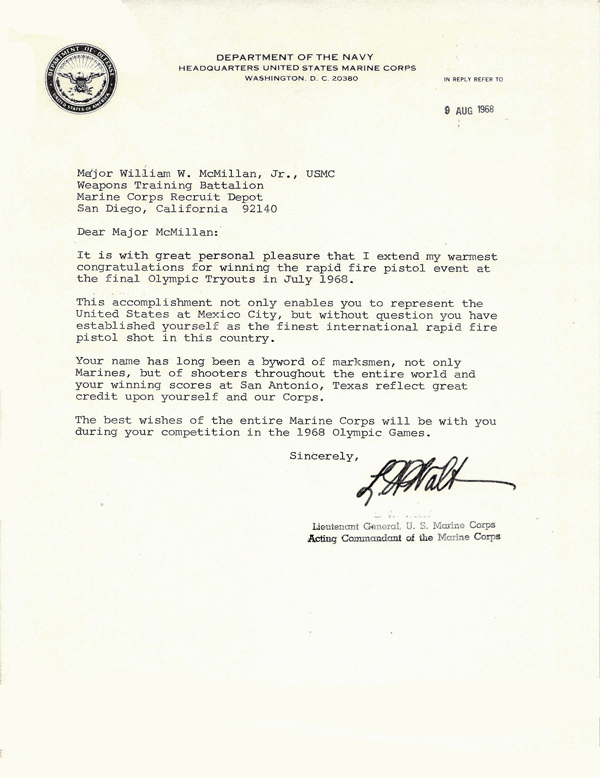
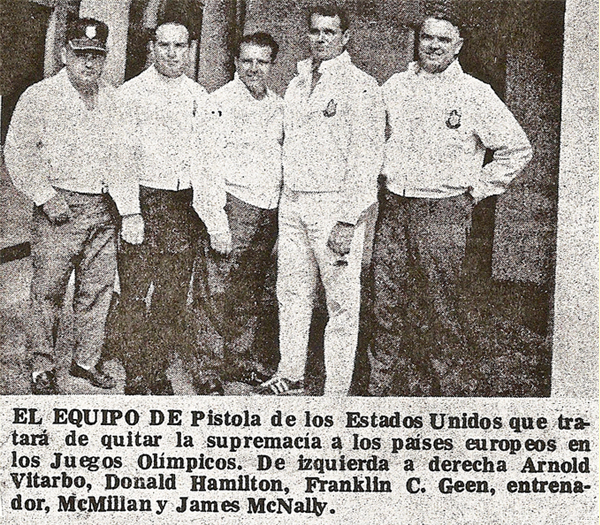
"The United States Pistol Team will try to remove the supremacy of the European countries in the Olympic Games. (left to right) Arnold Vitarbo, Donald Hamilton, Franklin C. Green, Coach, McMillan and James McNally"
| Rank | Name | Country | 1st Stage | 2nd Stage | Total Points |
|---|---|---|---|---|---|
| 1st | Josef Zapdzki | Poland | 298 | 295 | 593 |
| 2nd | Marcel Rosca | Romania | 295 | 296 | 591 |
| 3rd | Renart Suleimanov | USSR | 297 | 294 | 591 |
| 4th | Christian Düring | East Germany | 296 | 295 | 591 |
| 5th | Erich Masurat | West Germany | 294 | 296 | 590 |
| 6th | Gerhard Dommrich | East Germany | 292 | 297 | 589 |
| 7th | Lubomir Nacovsky | Czechoslovakia | 292 | 296 | 588 |
| 8th | Giovanni Liverzani | Italy | 292 | 296 | 588 |
| 9th | Johhann Standl | West Germany | 292 | 295 | 587 |
| 10th | Ladislav Falta | Czechoslovakia | 296 | 291 | 587 |
| 11th | Pentti Linnosvuo | Finland | 296 | 291 | 587 |
| 12th | Takeo Kamachi | Japan | 292 | 294 | 586 |
| 17th | William W. McMillan | USA | 290 | 294 | 584 |
| 25th | James H. McNally | USA | 285 | 295 | 580 |
Source: U.S. Olympic Committee Quadrennial Report
| Place | Name | Country | Total Points |
|---|---|---|---|
| 1st | Grigori Kosych | USSR | 562 |
| 2nd | Heinz Mertel | West Germany | 562 |
| 3rd | Harald Vollmar | East Germany | 560 |
| 4th | Arnold Vitabro | USA | 559 |
| 17th | Donald Hamilton | USA | 548 |
Source: U.S. Olympic Committee Quadrennial Report














